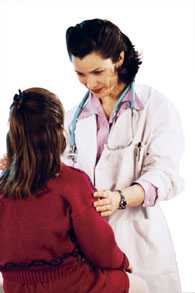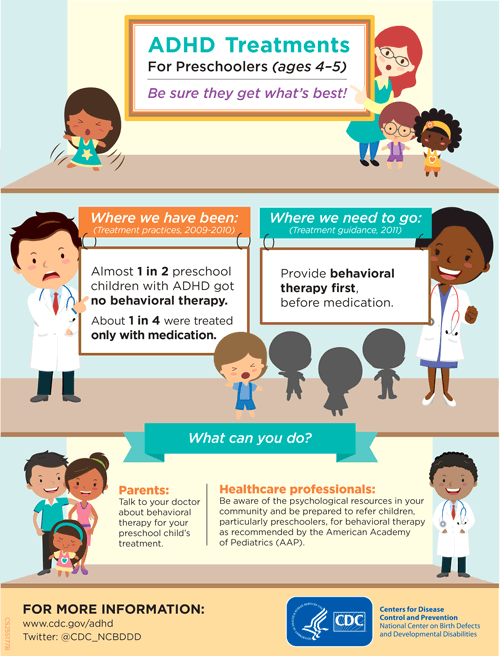Recommendations

The American Academy of Pediatrics (AAP) published a clinical practice guideline that provides recommendations based on the best available medical evidence (evidence-based) for the diagnosis and treatment of children with attention-deficit/hyperactivity disorder (ADHD). This guideline is intended for use by healthcare providers working in primary care settings, like pediatricians and family physicians.
Diagnosis and Evaluation
Here are the recommendations for the diagnosis and evaluation of ADHD based on the AAP guideline:
- The primary care clinician should provide initiate an evaluation for ADHD for any child 4 through 18 years of age who shows or presents with academic or behavioral problems and symptoms of inattention, hyperactivity, or impulsivity.
- To make a diagnosis of ADHD, the primary care clinician should determine that diagnostic criteria have been met based on the Diagnostic and Statistical Manual of Mental Disorders – Fifth edition (DSM-5, which replaced the Fourth Edition (DSM-IV) in May 2013). Making a diagnosis includes documenting that the child has difficulties in more than 1 major setting (e.g., in school and at home). The primary care clinician should include reports from parents or guardians, teachers, and/or other school and mental health clinicians involved in the child’s care. The primary care clinician should also exclude any other possible cause for the symptoms.
- When evaluating a child for ADHD, the primary care clinician should assess whether other conditions are present that might coexist with ADHD, including emotional or behavioral disorders (such as anxiety, depression, and behavior problems), developmental (such as learning and language disorders), and physical conditions (such as tics or sleep disorders apnea).
- The primary care clinician should recognize ADHD as a chronic (long-standing) condition and, therefore, consider children and adolescents with ADHD as children and youth with special health care needs. Care for such children and youth should follow the principles of the chronic care model and the medical home.
Read more about this recommendation.
Did you know?
The behavior therapy with best evidence with young children with ADHD is Parent Training in Behavior Therapy.

Treatment
The guideline contains the following recommendations by AAP for the treatment of ADHD:
- Recommendations for treatment of children and youth with ADHD vary depending on the patient’s age:
- For preschool-aged children (4–5 years of age), the primary care clinician
- Should prescribe evidence-based parent- and/or teacher-administered behavior therapy as the first line of treatment and
- May prescribe methylphenidate (a medication to treat ADHD) if the behavior therapy does not provide significant improvement and the child continues to have moderate to severe symptoms.
- For preschool-aged children (4–5 years of age), the primary care clinician
In areas where evidence-based behavioral therapy is not available, the clinician needs to weigh the risks of starting medication at an early age against the harm of delaying diagnosis and treatment. Read more about evidence based treatment options for preschoolers.
-
- For elementary school–aged children (6–11 years of age), the primary care clinician should prescribe US Food and Drug Administration–approved medications for ADHD and/or evidence-based parent and/or teacher-administered behavior therapy as treatment for ADHD, although preferably both medication and behavior therapy should be used together. The evidence is particularly strong for stimulant medications and sufficient, although less strong, for atomoxetine, extended-release guanfacine, and extended-release clonidine (in that order). The school environment, program, or placement is a part of any treatment plan. For example, school programs might provide classroom adaptations, such as preferred seating, modified work assignments, and test modifications (such as location for taking the test and extended test time), as well as behavior plans or special education.
- For adolescents (12–18 years of age), the primary care clinician should prescribe Food and Drug Administration–approved medications for ADHD with the assent of the adolescent and may prescribe behavior therapy as treatment for ADHD, although preferably both medication and behavior therapy should be used together..
- The primary care clinician should monitor and alter, as needed, the dose of medication given to the child for ADHD in order to achieve the maximum benefit while minimizing any problems from taking the medication.
Read more about this recommendation.
Read more about the role of healthcare providers in assisting children with special needs.
- Page last reviewed: August 31, 2017
- Page last updated: August 31, 2017
- Content source:


 ShareCompartir
ShareCompartir